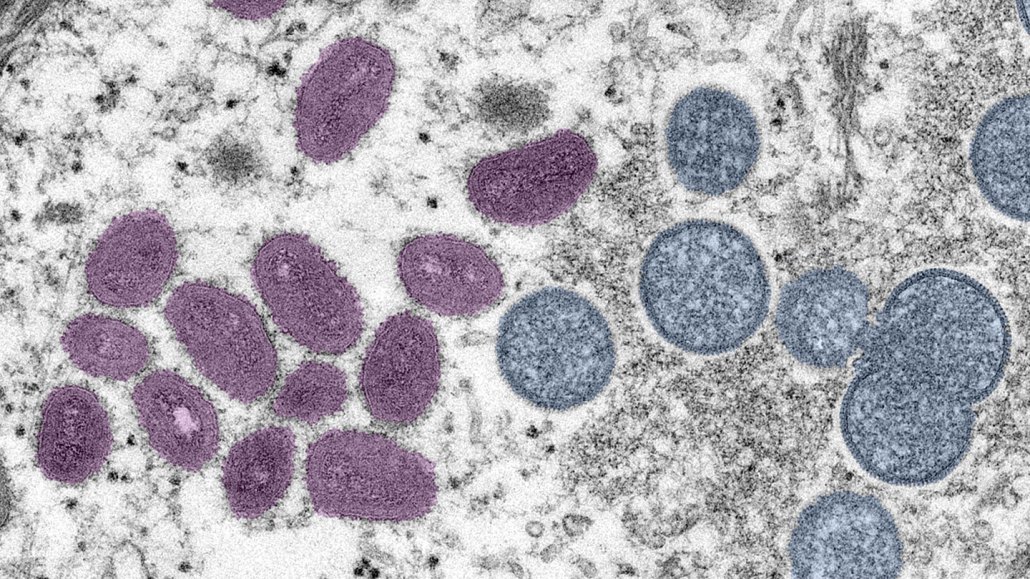Monkeypox is not a global health emergency for now, WHO says
Meanwhile, scientists are analyzing the virus’s genetic data for clues to its unprecedented spread

Monkeypox has spread to at least 4,100 people in 46 countries. Mature monkeypox viruses, pink, and immature viruses, blue, are shown in a colorized electron micrograph.
Cynthia S. Goldsmith, Russell Regnery and Hannah Bullock/CDC